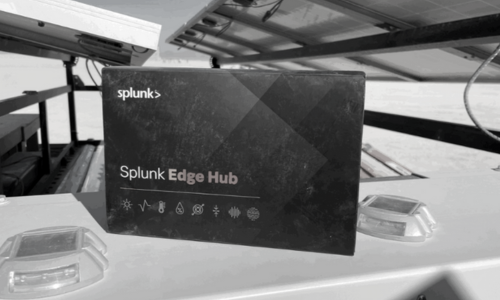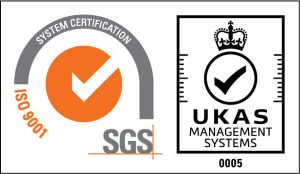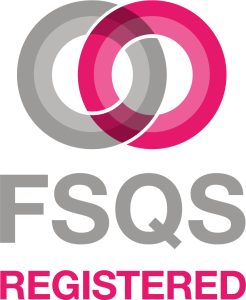
Splunk Edge Hub Use Cases
Author: Becca Lambert
Release Date: 22/08/2024
What is the Splunk Edge Hub?
Splunk Edge Hub is a fully integrated hardware and software solution with integrated sensors and all the necessary connectivity libraries already integrated into it. Providing the user with a quick and easy to use solution of getting all of their IOT data into their Splunk environment. Edge Hub helps you integrate the data from your environmental sensors, IoT devices and industrial equipment, which is a subset of data which has been historically hard to access.
With the clear visibility the Splunk Edge Hub provides with this data, it can enable improved decisions making in operational conditions and asset monitoring, in order to achieve a much higher level of digital resilience. Helping you fully utilise Splunk's advanced analytics platform for all of your operational technology and IoT data needs.
What Data Can You Bring in Using the Edge Hub?
The sensors that are inbuilt into the device are just the starting point of some of the data that the Edge Hub can bring into Splunk. In addition to these sensors the hub also comes with built-in bluetooth, MQTT, OPCUA , SNMP connectivity to further expand the range of coverage and provide the user with the option to bring data in from external sensors in addition to those built into the device.
Most recently as part of a recent firmware update the device now comes with the option to run containers, which can be installed and run on the divide using the advanced menu. This can allow for the running solutions such as node red and various other containers for further data collection such as profinet and integration with the device allowing practically any IoT data source to be brought into Splunk using the hub.
Key Use Cases for the Edge Hub
A key point for the edge hub is that it allows the flow of data from the hard to reach places of your infrastructure such as sensors and endpoints, which has been historically a challenge to access this level of data. By bringing this data into Splunk and harnessing the power of the Splunk Analytics platform it enables the user to gain complete visibility over there entire infrastructure and utilise this data to drive further observability, security and growth. Here are just some of the possibilities that this data can be used for:
Predictive Maintenance
When collecting sensor data, regarding how particular pieces of machinery are running, such levels of vibration of moving parts, or the temperature within, we can then build up a picture of ideal running conditions, once this data has been gathered we can then easily spot changes from the “normal”, which can then be combined with the machine learning toolkit available for free on Splunkbase, to further power alerts and further insights into areas of potential upcoming faults of failures, which can be investigated and solved before they result in unexpected downtime or maintenance.
Due to the extensive range of sensors and data collection methods available using the edge hub, this can then be used to specifically identify which part of a piece of machinery that will fail and you can combine this further with automation, through the use of the Splunk SOAR add on. This can result in parts being ordered and engineers prepped and ready for installation before any costly downtime.
Remote Monitoring and Fault Finding
Through the use of the Splunk platform and the Splunk mobile app remote engineers can see the alerts and data being sent from the hub and the infrastructure and environments that it is monitoring, on the go and to their convenience.
Allowing for the use of remote diagnostics from engineers on the ground or from a central control point, reducing the need for onsite visits and the costly implications of travel and engineer time, as the faults can be diagnosed remotely, with full visibility of the infrastructure using the sensor data. This can be easily integrated with the Splunk ITSI Platform so the measurements taken can and any faults or potential issues can be taken into account when working out your KPIs.
Monitoring Harsh & Unfriendly Environments
The device itself is IP66 rated, meaning it is built to withstand harsh environments could potentially be classed and unsafe for regular visits by an maintenance engineer, this combined with an external sensor network of sensors can result in remote monitoring of harsh and dangerous environments reducing the need and risk of this data collection needing to be collected by an engineer on the ground.
The built in sensors also allow the device to be used to collect data from the moment it’s connected, allowing you to have an immediate return on investment without the need to integrate external sensors straight away. But also with the integration of external sensors the edge hub works equally well and can be considered as a specialised forwarder to allow for the streaming of IoT Data into Splunk, allowing you to integrate your existing sensors as well as working with Edge Hub partners to create a new infrastructure to allow you to start seeing the benefits of what collecting IoT Data can bring you.
All data that the edge hub creates is streamed into Metrics indexes in the platform and is not stored within the device itself, this allows you to use the data with all the same apps and add ons as you would with any data streamed into the platform allowing you to easily integrate this with ITSI, 011Y AI and the Machine Learning Toolkit, with easy interoperability.
Licence Impact & Data Storage
The Hub itself does not store any live data, this is all sent to indexes on the Splunk Platform, very similar to how you would expect a universal or heavy forwarder to act. All of the data is stored within metric indexes in the Splunk platform. Due to the data sent in and ingested as metrics, this will have a very minimal impact on your licence if you are on an ingest licence model . Therefore you are able to use the data with all the same apps and add ons as you would with any data streamed into the platform allowing you to easily integrate this with ITSI, 011Y AI and the Machine Learning Toolkit, with easy interoperability.







